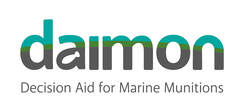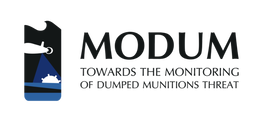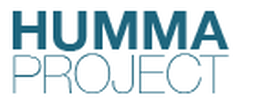Former and ongoing related projects:

DAIMON 1 (2016-2019) examined in detail the Baltic underwater munitions dumping sites (both conventional and chemical) identified and mapped by the CHEMSEA and MERCW projects. On this basis tools and methods were developed to assess the risk flowing from this dangerous waste and support governments in case-to-case decision-making. Main project outcomes were the Ecotox methodology Toolbox for environmental researchers and Decision Support System (DSS) for maritime authorities.

The North Sea Wrecks project (INTERREG North Sea, 2018-2021) with its partners from Germany, Netherlands, Denmark and Norway is a sister project of DAIMON in the North Sea. NSW shall provide tools necessary for planners, response organizations, economic actors and other stakeholders to assess and propose solutions for risk mitigation regarding wrecks and munitions in the North Sea. One of the main outcomes of the project will be a travelling exhibition about underwater ammunition and wrecks.

UMBRELLA is a cluster project created to minimize redundancy among projects on dumped chemical munitions in the Baltic Sea region. Its aim is to disseminate knowledge and to promote interdisciplinary approach towards improvement of capacity for research and response regarding the threats of chemical munitions dumped in the Baltic Sea. The website promotes projects, initiatives and organizations, as well as gathers official documents, scientific and press articles, videos and events focused on dumped chemical munitions.
Project contributes to the Priority Area HAZARDS of the EUSBSR.
Project contributes to the Priority Area HAZARDS of the EUSBSR.

(2013-2016) was funded by the NATO Science for Peace and Security program and addressed the issue of monitoring of CWA dumpsites. Since these are also topics of the DAIMON project, the two projects actively cooperated, sharing expertise and results.
MODUM has also been led by the Institute for Oceanology of the Polish Academy of Sciences (IO PAN).
MODUM has also been led by the Institute for Oceanology of the Polish Academy of Sciences (IO PAN).

The CHEMSEA / Baltic Sea Region project (2011 - 2014) was dedicated to detection and mapping of the location of CWA objects in the known dumping areas, and sediment pollution (Please read the CHEMSEA FINDINGS). The focus on marine organisms was greater than in MERCW, but limited mostly to Bornholm Deep, with its specific conditions. CHEMSEA introduced the biomarker approach to observe biological effects of contamination on the health of organisms, including exposure experiments and insitu observations. Important output of CHEMSEA is the Center of Excellence for Dumped Munitions (CoEDCM) created as a hands-on transnational analytical center of CWA related hazards. The CoEDCM is also at the core of the DAIMON partnership.

(2003-2008) provided detailed information on the location of munitions, preliminary assessment of sediment pollution around the found objects, and modeled the distribution of chemical warfare agents related pollution in and around the dumping region. Some of the activities attempted to estimate the consequences of potentially leaking CWA for marine organisms, based on concentrations of CWA degradation products measured in sediments combined with fish stock data and environmental models.

Since 2007 the University of Hawai‘i at Manoa (UHM) has been awarded approximately $7.5 million to conduct the Hawai‘i Undersea Military Munitions Assessment (HUMMA). HUMMA focuses on evaluating the potential risk to human health and the environment of an historic munitions disposal site located south of Pearl Harbor in waters from 300-600 meters deep. UHM has mounted six field programs, using advanced technologies, to locate and assess the condition of munitions and their surroundings, including animals living near or on the munitions.

